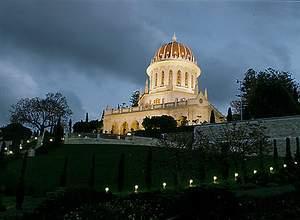Advertisement
Published: November 12th 2006

 Haifa
Haifa
Haifa, Haifa - IsraelNov 14, 1993
*
City official name :Haifa
*
Founded date : *
Location :Haifa District
*
Elavation :? ft (? m)
*
Area :Approximately ? square miles (? km²).
*
Facts :Haifa (Hebrew חֵיפָה Ḥefa; Arabic حَيْفَا Ḥayfā (help·info)) is the main city of northern Israel and the third-largest city in the country, with a population of about 267,800 (as of May 2006). It and areas and towns around it are deemed to be in the Haifa District. It is a seaport, located below and on Mount Carmel, and lies on the Mediterranean coast.
The city's sole official romanization Haifa and the common English pronunciation /ˈhaɪ.fə/ are based on the Arabic name Ḥayfā, whilst the unused Standard Hebrew name is Ḥefa, and the local Hebrew pronunciation is typically /xei.ˈfa/.
The origin of the name Haifa is not clear. Some tie it to the Hebrew word חוף (hof, meaning "beach"), or חוף יפה (hof yafe, meaning "Beautiful beach"), or maybe the Hebrew verb root חפה (hafo, meaning "to cover or hide"). Christian pilgrims of the Middle Ages (and later the Crusaders) called the town Caiphas or Caifa. The Christians believe the name derives from Caiaphas, the High Priest

 Haifa
Haifa
Haifa, Haifa - Israelof Jerusalem during the time of Jesus, or from the Aramaic name of Saint Peter, Kepah (כפא). Additionally, the name Sycaminon or Sykaminos, meaning "wild strawberry", is also used.
Some also believe the name came from the words חי-פה("hai-po", meaning "living-here") presuming God resides in the city.
Haifa is first mentioned in Talmudic literature around the 3rd century CE, as a small town near Shikmona, the main Jewish town in the area at that time. The Byzantine ruled there until the 7th century, when the city was conquered — first by the Persians, then by the Arabs. In 1100, it was conquered again by the crusaders, after a fierce battle with its Jewish inhabitants. Under crusader rule, the city was a part of the Principality of Galilee until the Muslim Mameluks attacked in 1265, leaving the city ruined and mostly abandoned until the 17th century.
In 1761 Daher El-Omar, Bedouin ruler of Acre and Galilee, destroyed and rebuilt the town in a new location, surrounding it with a thin wall. This event is marked as the beginning of the town's modern era. After El-Omar's death in 1775, the town remained under Ottoman rule

 Haifa
Haifa
Haifa, Haifa - Israeluntil 1918, except for two brief periods: in 1799, Napoleon Bonaparte conquered Haifa as part of his brief and failed campaign to conquer Palestine and Syria, but withdrew the same year; and between 1831 and 1840, the Egyptian viceroy Mehemet Ali governed, after his son Ibrahim Pasha wrested control from the Ottomans.
At the beginning of the 20th Century, Haifa had emerged as an industrial port city and growing population center. At that time Haifa district was home to approximately 100,000 inhabitants, comprised of 82% Muslim Arab, 14% Christian Arabs, and 4% Jewish residents.
On 30 December, 1947 members of the Jewish militant group Irgun hurled two bombs into a crowd of Arabs who were waiting for construction jobs outside the gates of the Consolidated Refineries in Haifa, killing 6 and injuring 42, whereupon 2,000 Arab employees rioted and killed 39 Jewish employees in what has become known as the Haifa Oil Refinery massacre. As the major industrial and oil refinery port in the Palestine, Jewish forces deemed control of Haifa, a critical objective in the ensuing 1948 Arab-Israeli War. It was captured on April 23rd, 1948 by a force of 5,000 Israeli soldiers led by the Carmeli

 Haifa
Haifa
Haifa, Haifa - IsraelBrigade. The campaign resulted in Israeli control over the area and the flight of about 80,000 Palestinian Arabs from Haifa District.
Haifa is now the home of a large Jewish population and a small Arab population as well as some members of the Bahai community who come and worship at their shrine located in Haifa. Arabs comprise approximately 10% of the population of Haifa.
Haifa was a primary initial target of Hezbollah rockets fired from Lebanon during the 2006 Israel-Lebanon crisis. On July 13, 2006 IDF sources reported that two rockets were fired. One shock injury has been reported. Three days later, on July 16, 2006, Hezbollah militants hit the city with several barrages of Katyusha rockets that killed eight Israelis in a train depot. July 17 saw further attacks upon Haifa as it withstood another withering assault from rockets.
It is noted by Jews for the Cave of Elijah and the historic Jewish town of Shikmona at the foot of Mount Carmel. The highest peak of Mt. Carmel is called Muchraka and there is a Carmelite monastery there. This is, by legend, the exact place where Elijah had his confrontation with the emissaries of Baal. (1

 Haifa
Haifa
Haifa, Haifa - IsraelKing 18:20)
Haifa is also cherished by the Christian and Bahá'í faiths. The Bahá'í World Centre (comprising the Shrine of the Báb, terraced gardens and administrative buildings on the Carmel's northern slope; see photo) is an important site of worship and administration for the members of the Bahá'í Faith, as well as providing the city with the most visited tourist attraction. Haifa was also a favourite monastic spot for the Carmelites in the 12th century; a 19th century monastery, Stella Maris, was rebuilt at Carmel's head. It is now a popular tourist and pilgrim's attraction.
Advertisement
Tot: 0.498s; Tpl: 0.012s; cc: 26; qc: 94; dbt: 0.2994s; 1; m:domysql w:travelblog (10.17.0.13); sld: 1;
; mem: 1.3mb







